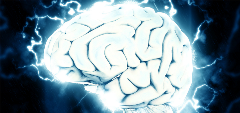Post-Traumatic Stress Disorder (PTSD) affects millions of people around the world and, like many mental health disorders, is likely under-reported as people are often hesitant to seek treatment. PTSD occurs after a horrifying incident is either suffered or observed and often results in long-term symptoms such as disturbing memories, evasion, depression, anxiety, and changes in emotional and physical responses.1 Sources of PTSD include, but are not limited to, sexual assault, combat, observing or experiencing violence or death, and other life-threatening incidents.2 However, not everyone who experiences trauma will develop the disorder and people often experience varying degrees of symptoms. This can make it difficult to treat. Current treatment approaches include psychotherapy techniques and addressing comorbidities, such as depression, anxiety, sleep disturbances, addiction, and more.1 Research to better understand why PTSD occurs, differences in how individuals process trauma, and to identify more effective therapeutics is ongoing.

Recent Advances in PTSD Research
Brain circuit dysfunction in post-traumatic stress disorder: from mouse to man
It is now generally accepted that genetic factors play a role in an individual’s risk of developing PTSD after a traumatic experience. However, there is still little information on what specific molecular changes are involved in this determination. This review examined the brain circuit mechanisms underlying each of the primary symptoms of PTSD by reflecting on conclusions from both human and animal studies. In addition, the authors provide an overview of progress made in understanding the genetics of PTSD risk and suggestions for future research. Their analysis showed that while we’ve made strides in understanding the molecular and genetic factors of PTSD, the results have uncovered even more complexity and show additional research is required to enable discovery of better therapeutics.3

Role of Human Ventromedial Prefrontal Cortex in Learning and Recall of Enhanced Extinction
Exposure therapy is considered the gold standard in PTSD treatment. It involves helping patients confront their feelings and memories surrounding trauma in a safe setting. A study published in April 2019 identified a method to improve the efficacy of this approach. Typically, the therapy involves uncomfortable electric shocks to the wrist and removing them over time. This study showed playing a neutral tone, rather than simply removing the shock, was more effective in reducing emotional responses long-term.4
Supporting PTSD Research
The following are two examples of studies which have used DSI solutions to examine aspects of PTSD.
Extinction of Fear Memory Attenuates Conditioned Cardiovascular Fear Reactivity
This study examined the relationship between PTSD and cardiovascular disease as fear typically elicits a cardiovascular response. Specifically, they wanted to study real-time behavioral and cardiovascular response to fear conditioning and extinction training. To measure cardiovascular response, the research team used DSI’s HD-X11 implants and Ponemah software to collect blood pressure, heart rate, and activity data. The team also conducted behavioral analysis including fear conditioning and extinction training. Fear conditioning was done with conditioning test cages using auditory cues and foot shocks. The test cages were contained in sound attenuating isolation cubicles from Coulbourn Instruments. Extinction training was performed in modified test cages with a plexiglass floor where the shock grid had previously been to differentiate them from the fear conditioning tests. They also used Coulbourn Instruments’ Freezeframe software to calculate the percentage of time spent freezing in extinction training. The study showed cardiovascular changes resulting from stress can be mitigated through recall of consolidated extinction memories.5

Effects of Chronic Social Defeat Stress on Sleep and Circadian Rhythms Are Mitigated by Kappa-Opioid Receptor Antagonism
People who suffer from PTSD often experience sleep dysfunction, and this study aimed to better understand the mechanisms behind the dysfunction to identify new treatment approaches. To help them monitor sleep patterns, the researchers used DSI’s F20-EET implant to measure EEG, EMG, temperature, and activity. The NeuroScore software platform allowed them to automatically perform sleep scoring analysis. They found stress affected paradoxical (PS) and slow-wave sleep (SWS), as well as the circadian rhythmicity of body temperature and locomotor activity. However, when the mice received opioid receptor (KOR) antagonist JDTic prior to stress exposure, they saw reduced effects on sleep patterns and quicker recovery.6
DSI Solutions
Implantable Telemetry
The study of PTSD has a broad range of research emphases including responses to stress, comorbid disorders or symptoms, and treatment evaluation. DSI telemetry offers the flexibility to monitor a variety of endpoints simultaneously, in a single study. Available endpoints include blood pressure, ECG, EEG, EMG, temperature, activity, and more.
Ponemah Software
Ponemah software not only allows researchers to collect physiologic data, but can also derive other endpoints from those collected, such as heart rate. In addition, it is possible to perform more sophisticated analyses to get biomarkers of interest such as heart rate variability, which can be affected by stress.
NeuroScore Software
NeuroScore allows researchers more complex analysis tools for neurological endpoints such as EEG. Specifically, researchers interested in looking at sleep dysfunction as a result of PTSD may use NeuroScore for sleep scoring analysis.
If you are interested in learning more about solutions for your PTSD research, schedule a free consultation with us today!
References
1Mayo Clinic Staff. (2018). “Post-traumatic stress disorder (PTSD)”. https://www.mayoclinic.org/diseases-conditions/post-traumatic-stress-disorder/symptoms-causes/syc-20355967
2Sareen J. (2019). “Posttraumatic stress disorder in adults: Epidemiology, pathophysiology, clinical manifestations, course, assessment, and diagnosis”. UpToDate. https://www.uptodate.com/contents/posttraumatic-stress-disorder-in-adults-epidemiology-pathophysiology-clinical-manifestations-course-assessment-and-diagnosis#H1824470698
3Fenster RJ, Lebois LAM, Ressler KJ, Suh J. (2018). Nature Reviews Neuroscience, 19(9), 535-551. https://www.ncbi.nlm.nih.gov/pmc/articles/PMC6148363/
4Dunsmoor JE, Kroes MCW, Li J, Daw ND, Simpson HB, Phelps EA. (2019). “Role of Human Ventromedial Prefrontal Cortex in Learning and Recall of Enhanced Extinction”. Journal of Neuroscience, 39(17), 3264-3276. https://doi.org/10.1523/JNEUROSCI.2713-18.2019
5Swiercz AP, Seligowski AV, Park J, Marvar P. (2018). “Extinction of Fear Memory Attenuates Conditioned Cardiovascular Fear Reactivity”. Frontiers in Behavioral Neuroscience. https://www.frontiersin.org/articles/10.3389/fnbeh.2018.00276/full
6Wells AM, Ridener E, Bourbonais CA, Kim W, Pantazopoulos H, Carroll FI, Kim KS, Cohen BM, Carlezon Jr., WA. (2017). “Effects of Chronic Social Defeat Stress on Sleep and Circadian Rhythms Are Mitigated by Kappa-Opioid Receptor Antagonism”. Journal of Neuroscience, 37(32), 7656-7668. http://www.jneurosci.org/content/jneuro/37/32/7656.full.pdf